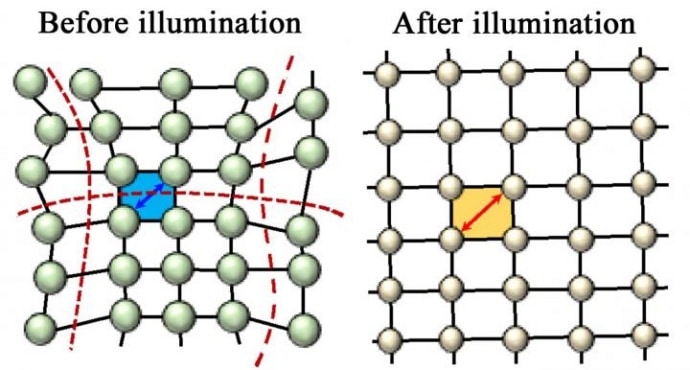Constant illumination improves photovoltaic efficiency of hybrid perovskite crystal
Los Alamos and Rice University team discovers sunbathing helps to relax strained structure of perovskite lattice
Perovskite minerals have been investigated for some time as alternatives to crystalline silicon for photovoltaic cells, as they may be cheaper and easier to manufacture. A team at Rice University and Los Alamos National Laboratory has now discovered that the properties of a particular perovskite compound can be improved simply by illuminating it.

The team, led by Aditya Mohite and David Tsai, is investigating hybrid perovskite compounds with the general formula of AMX3, where A is a cation, M a divalent metal, and X is a halide. "It's a polar semiconductor with a direct band gap similar to that of gallium arsenide,” Mohite said.
Published in Science, the research explains that under normal circumstances these materials have a strained crystal structure, with a distorted lattice. But when illuminated, the lattice relaxes and uniformly expands in all directions. This aligns the crystal planes cures defects in the structure, which makes it easier for electrons to move through the system and deliver energy to end-user devices.
Register now to continue reading
Thanks for visiting The Engineer. You’ve now reached your monthly limit of news stories. Register for free to unlock unlimited access to all of our news coverage, as well as premium content including opinion, in-depth features and special reports.
Benefits of registering
-
In-depth insights and coverage of key emerging trends
-
Unrestricted access to special reports throughout the year
-
Daily technology news delivered straight to your inbox










UK Enters ‘Golden Age of Nuclear’
The delay (nearly 8 years) in getting approval for the Rolls-Royce SMR is most worrying. Signifies a torpid and expensive system that is quite onerous...